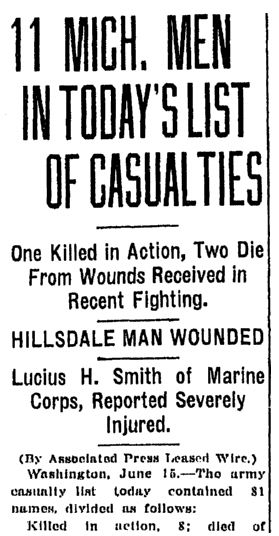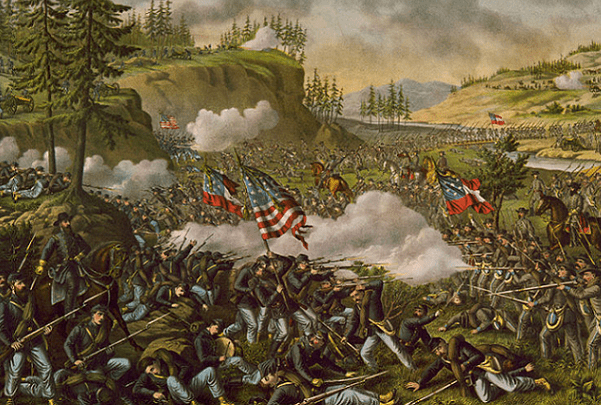Introduction: In this article – in honor of Memorial Day – Gena Philibert-Ortega gives search tips to learn more about your soldier ancestors who died in the service of their country. Gena is a genealogist and author of the book “From the Family Kitchen.”
Memorial Day, always commemorated on the last Monday of May, honors those soldiers who died serving in the U.S. military. The holiday originally honored Civil War soldiers, but after World War I the holiday began honoring the death of all active duty soldiers.
Consider taking some time this Memorial Day weekend to write the story of your soldier ancestor who died while serving. Old newspapers, such as the collection in GenealogyBank’s Historical Newspaper Archives, are an important part of telling that story. Various types of newspaper articles document the lives of those who’ve died while serving in the military and on the battlefield. Below are just a few examples.
Casualty Lists
Newspaper casualty lists are an unfortunate reality during wartime. These may be found in any number of places in the newspaper, from the front page to the obituary section. In some cases, they may be general articles about casualty numbers, or they may list those who died from the immediate area that the newspaper serves. Take for example this World War I-era casualty list. Although the title states “11 Mich. Men in Today’s List of Casualties,” this article actually lists nationwide casualties: it has the names of men who lived in other states, from California to New Jersey, and even the mention of a Russian man.

Genealogy Tip: When searching GenealogyBank, try conducting your initial search using your ancestor’s name only. There are circumstances in which an ancestor may be listed in a newspaper published in areas outside of their home state, where you might not think to look and would have missed if you did your initial search with a specific location. Please note that this is easier to do when your ancestor has a less common name.
Obviously, casualty lists differ depending on the time period, the information received, and the newspaper that published them. In the case of the newspaper article below, the list of names is printed alphabetically by state and includes what the soldier died from. Remember that the soldier may have died from something other than a combat wound, like friendly fire or a disease. Further research into a death certificate or an obituary would provide more information. In the case of a World War I soldier, a death caused by disease could very well be related to the Spanish Flu pandemic.
To find lists of casualties, add the keywords “casualty,” “casualties,” or “killed in action” to your search.
Obituaries
Have you looked for obituaries for all your military-serving ancestors? Obituaries may provide military service details, especially for those killed in action, that can assist you in piecing together their military service. For example, in this obituary for Capt. F. E. Phillips Jr. from Worchester, Massachusetts, we learn that he was killed in action in the South Pacific in July 1944. His obituary reports that he:
“…enlisted in the marines early in the war and was commissioned a second lieutenant in the marines in 1942. He became a captain in October of that year. He was in the Pacific in late ’42 and early ’43 and returned to this country in 1943. He later returned to the Pacific war area after his marriage in June 1943.”
We often think of obituaries as providing birth and death dates, and familial relationships – but don’t forget that they may provide a sketch of that person’s military service as well.
Public Memorials
Is there a public memorial or honor roll in your ancestor’s hometown? Some cities erect these monuments to honor those local soldiers who died during war time. The newspaper is a great way to learn more about the construction of such memorials and the unveiling or completion ceremonies.
This newspaper notice of plans for a Dallas memorial reports that:
“The Victory Memorial will be a large semicircular monument, twenty-five feet wide and ten feet high and built of native Texas stone… Around the top of the monument will be engraved these words: They Died That All Men Might Be Free. Below the inscription will be placed the names of all Dallas County persons who died while engaged in any branch of the United States military service during World War II.”
Researching Your Soldier Ancestor
Researching the soldiers in your family history who gave the ultimate sacrifice should include a combination of home sources, military records, and historical newspapers. Use these sources to create a narrative that allows all of your modern-day family to remember that person on Memorial Day and beyond.
Related Articles:
